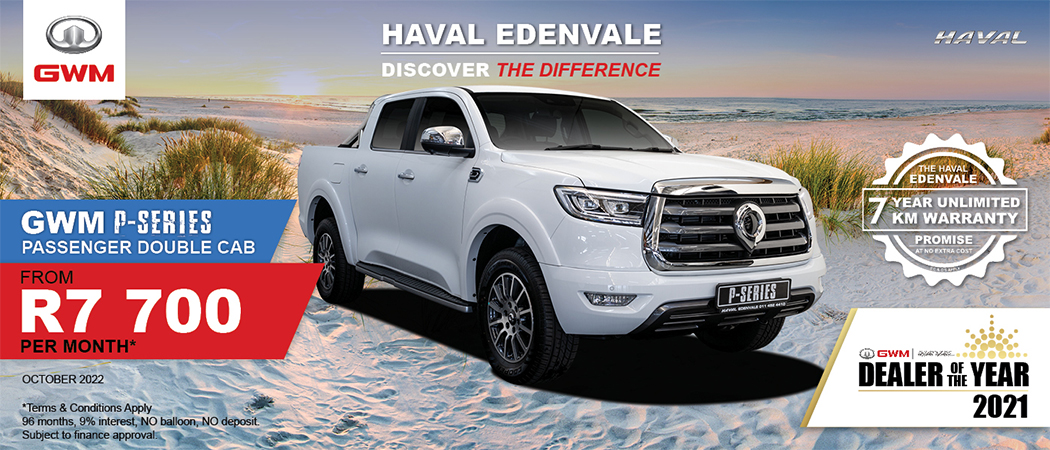Toyota Yaris sales indicate that few things could go wrong for newcomers bearing the three-ringed emblem, and the Fortuner SUV’s aggressive pricing could ensure that this seven-seater, too, has “success” written all over it…
Toyota Yaris sales indicate that few things could go wrong for newcomers bearing the three-ringed emblem, and the Fortuner SUV’s aggressive pricing could ensure that this seven-seater, too, has “success” written all over it…
Toyota’s Fortuner is the Japanese powerhouse’s first attempt at following the American example of producing a full-blown SUV based on the successful Hilux pick-up. But given this SUV’s engine range and pricing, indications are that this large seven-seater will seriously shake up the market.
Kaoru Hosokawa, executive chief engineer for the Fortuner, said “An important factor in the development of the Fortuner is that we knew from the outset that we would be producing an SUV as a member of the IMV (International Innovative Multi-purpose Vehicle) family. Because of this much of the design work on the Hilux pick-up was completed with this in mind.”
The five-model Fortuner range offers a five-door, seven-seater configuration, with pricing ranging from a very keen R286 075 to R346 575 for the top-of-the-range model. The SUV is priced to compete with several established models, including the Jeep Cherokee, Subaru Forester, Ford Territory, Kia Sorento and Land Rover Freelander. Also, offering the functionality of a seven-seater, the Fortuner could provide an interesting alternative to VW Kombi, SsangYong Stavic and Renault Espace buyers in the MPV segment.
Fortuner joins the Toyota range between the compact RAV4 SUV and the serious Land Cruiser Prado, with the entry-level 3,0-litre diesel 4X2 even undercutting its smaller stable-mate, the five-door RAV4 200.
CAR magazine editor John Wright reports that Toyota plans to sell at least 500 Fortuner units a month on the local market. The range consists of three petrol and two diesel derivatives with five-speed manual transmission. A five-speed automatic is available on the 4,0-litre V6 4X4 model only.
Petrol-engined models are powered by a new 24-valve, double overhead cam four-litre V6, which Wright described as being particularly smooth. This engine has variable torque characteristics depending on the chosen transmission.
In five-speed manual mode, maximum power is 175 kW at 5 200 r/min with 343 N.m of torque available from 2 400 r/min to 4 800 r/min. Using the automatic gearbox, the torque is bumped up to 376 N.m at 3 800 r/min.
Diesel models use a turbocharged 16-valve, four-cylinder 3,0-litre unit with double overhead cams producing peak power of 120 kW at 3 400 r/min and peak torque of 343 N.m available from 1 400 to 3 200 r/min.
Though the majority of Fortuners will spend their lives on well-tarred roads, and Wright commented that “for an SUV, the vehicle handles superbly. Though based on a ladder-frame chassis, its ride is pretty damn good - it is very stable and corners well.”
“Its off-road capability (on rough roads) is exceptionally good, with great pulling power in low range. It is unfortunate that we were not given the opportunity to test the SUV in soft sand and mud/slush,” Wright added.
An all-coil spring suspension layout, coupled with a double wishbone at the front and a four-link design with a lateral control rod at the rear, has been used.
Full-time 4X4 models are equipped with a lockable Torsen limited slip centre differential that quickly alters the distribution of torque between the front and rear wheels, and a two-speed transfer case for engaging high and low ranges. Both 4X4 and 4X2 models are fitted with a manually activated rear differential lock.
Minimum ground clearance is 230mm on the visually identical 4X2 and 4X4 models. On the 4X4s, the ride height allows for a 30 degree approach angle and a 25 degree departure angle. A towing capacity of up to 1 500 kg is possible with a braked trailer.
“Since it is pick-up based, Fortuner’s interior has a more utilitarian and functional feel, though the level of specification is quite high,” Wright said.
Standard equipment on all models include roof rails, a rear spoiler with a high-mounted brake light, front fog lamps, concealed antenna, chrome exterior door handles and body-coloured fenders, power windows all round, dual airconditioning system, multi-function display, power steering and reclining leather seats and steering wheel. In addition, the range-topping 4,0-litre 4X4 model gets cruise control and a transmission shift lock.
All models feature a 60/40-split middle row with seats that slide and tumble forward, and a third row of “space up” seats that fold away into the utility space. Two sports bucket seats are provided for front occupants, and the seats slide over 240 mm to free up more legroom. Toyota insists that the two third row seats can accommodate two adults in comfort…
Safety features include ABS brakes and driver and passenger airbags. Fortuner is fitted with 16-inch alloy wheels and a full-sized alloy spare wheel.
Service intervals on the V6 petrol engine models are 15 000 km while the turbodiesels have a 10 000 km service interval. Included in the price is a 90 000km/three-year service plan and a warranty covering 100 000 km or three years with 24-hour roadside assistance.
Prices:
DIESEL
3,0l 4x2 (raised body) R286 075
3,0l 4x4 R322 975
PETROL
4,0l V6 4x2 (raised body) R297 575
4,0l V6 4x4 R334 475
4,0l V6 4x4 A/T R346 575
Original article from Car














